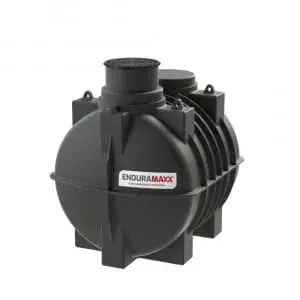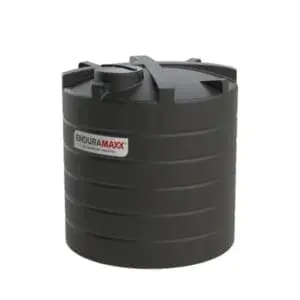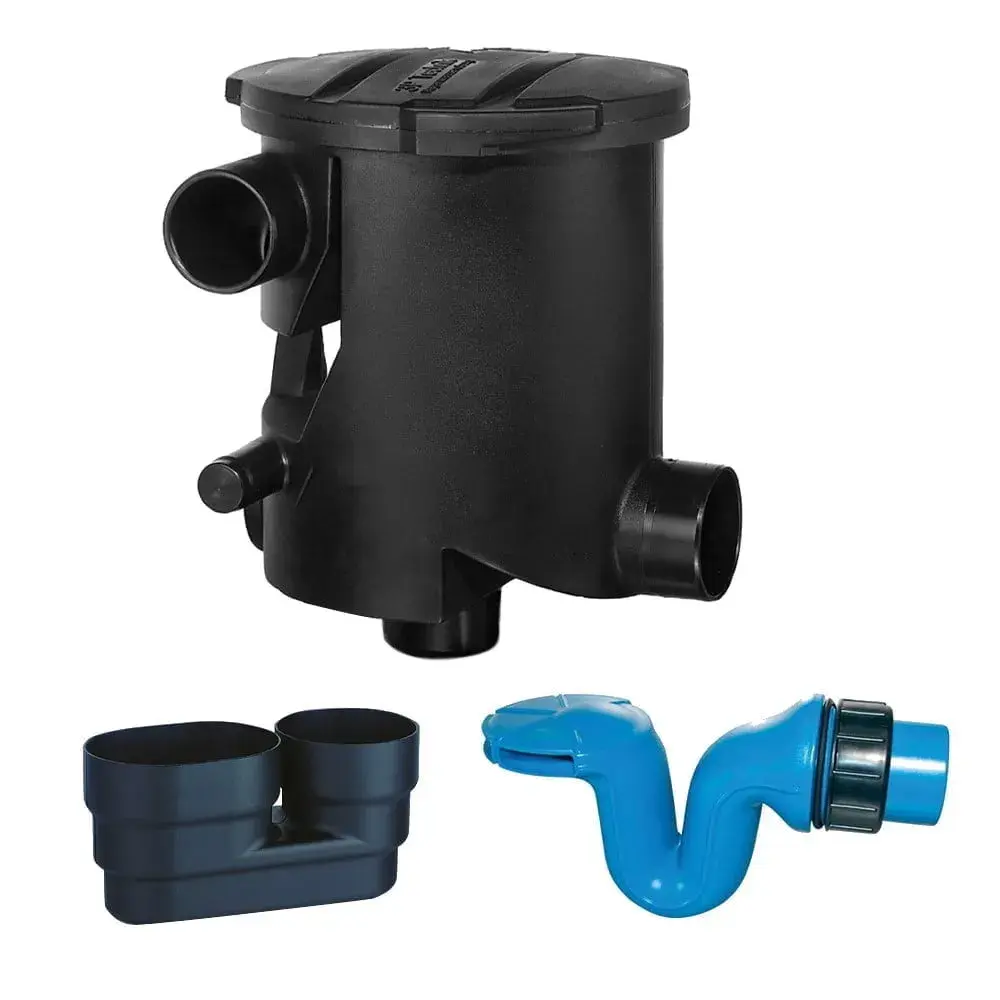
What Is Reverse Osmosis – Reverse Osmosis is based upon the fundamental pursuit for balance. Two fluids containing different concentrations of dissolved solids that come in contact with each other will mix until the concentration is uniform.
When these two fluids are separated by a semi-permeable membrane (which lets the fluid flow through, while dissolved solids stay behind), the fluid containing the lower concentration will move through the membrane into the fluid containing the higher concentration of dissolved solids. After a while, the water level will be higher on one side of the membrane. The difference in height is called osmotic pressure.
By applying a pressure that exceeds the osmotic pressure, the reverse effect occurs. Fluids are pressed back through the membrane, while dissolved solids stay behind.
To purify water by Reverse Osmosis membrane, the natural osmosis effect must be reversed. In order to force the water of the brine stream (high salt concentration) to flow towards the fresh stream (low salt concentration), the water must be pressurized at an operating pressure greater than the osmotic pressure. As a result, the brine side will get more concentrated. The operating pressure of seawater is around 60 bar.
- Water flows from a column with a low dissolved solids content to a column with a high dissolved solids content
- Osmotic pressure is the pressure that is used to stop the water from flowing through the membrane, in order to create balance
- By pursuing pressure that exceeds the osmotic pressure, the water flow will be reversed; water flows from the column with a high dissolved solids content to the column with a low dissolved solids content.
What Sectors Can RO Be Used In?
Water is required in most manufacturing applications and is used to clean machinery, process parts, produce consumables, wash out packaging before products.
RO can be used in the following sectors:
- Automotive
- Food & Beverage
- Aerospace
- Pharmaceutical
- Agriculture
- Finishing
- Industrial
Reverse Osmosis in the automotive industry Water is a key element of the process of producing, maintaining, and cleaning a vehicle and its components. In the production stages of creating a vehicle, water usage is at its highest. The wastewater from producing a car contains metals, oils, grease, and harmful chemicals from paint residue and can be dangerous if they enter the water system and can cause long-term damage to the environment.
Reverse Osmosis can be used to produce the water needed in the initial part of the process and also at the end of the process where the wastewater can be processed again using RO. Once the water is cleaned and the waste products removed and disposed of correctly rather than just flushed away, it can then be reused in the production process, reducing waste and usage of water.
Reverse Osmosis in industrial wastewater treatment – many industrial processes involved in manufacturing and the cooling of plant and machinery make use of water, which ends up containing chemicals, oils, and other residues. By using reverse osmosis the often harmful waste products can be separated from the clean water for safe disposal. The clean water can then be reused saving money on water bills.
Depending on the nature of the wastewater in question there will be different requirements for water storage. In the recycling industry, harsh chemicals are used to treat any metals and the wastewater produced is particularly harmful. The RO system needs to be able to deal with such corrosive fluids which will, in turn, affect its materials of construction and potential requirements for bunding.
Reverse Osmosis in the food and drink industry – Reverse osmosis is also used in various food production processing. Reverse Osmosis is used in the dairy industry to separate whey from water to leave concentrated whey protein. In maple syrup, production reverse osmosis is the process to remove water from the sap before it is boiled down to form the syrup.
The food and beverage industry is highly regulated so water usage is high not only as a major ingredient in food and drinks but it’s an essential part of maintaining food hygiene standards. It’s also used to prevent the spread of harmful bacteria, as food is prepared, pathogens from meat and poultry need to be removed properly, as they can spread onto other surfaces and kitchen equipment. Pure water is also essential in the sterilization of kitchen preparation areas to ensure bacteria doesn’t reach other areas of the plant.
What Are The Benefits To Using RO
There are a number of benefits RO can provide to industrial processes and is generally regarded as one of the the best water filtration systems. Reverse osmosis is one of the greenest solutions for industrial wastewater. It captures impurities allowing you to dispose of them correctly. The primary cost for RO is electricity, modern water filtration systems are designed to consume little energy so operating costs are relatively low as well as reducing the requirement for chemicals on side as hazardous chemicals aren’t required. Membranes can last up to 2-3 years depending on varying factors such as the quality and quantity of the water being fed into the RO system and limited downtime as membranes can be replaced within hours.
Enduramaxx manufactures a number of water break tanks, brine tanks, and raw Water/permeate tanks, for more details please get in touch.
Posts By Topics
- Blog (303)
- Chemical Storage Tanks (118)
- Chemical Dosing Tanks (114)
- Chemical Tanks (114)
- Water Tanks (58)
- Rainwater Harvesting Tanks (43)
- Vertical Rainwater Tanks (31)
- Vertical Storage Tanks (31)
- Cone Bottom Tanks (19)
- Conical Cone Tanks (18)
- Rainwater Harvesting (17)
- Water Bowsers (15)
- Horizontal Tanks (14)
- Potable Water Tanks (13)
- Farming (9)
- Case Studies (8)
- Industrial Storage Tanks (7)
- Liquid Fertilser Storage Tanks (6)
- WRAS Approved Potable Tanks (6)
- Wine and Beer Production (6)
- Horizontal Transport Tanks (5)
- Microbrewery (5)
- Rainwater (5)
- Category 5 Break Tanks (4)
- Cider Production (4)
- Mixer Tanks (4)
- Molasses Tanks (4)
- Polyethylene tanks (4)
- Rainwater Filter Kits (4)
- SPECIALIST & BESPOKE TANKS (4)
- Bunded Tanks (3)
- Slimline Tanks (3)
- WRAS Approved (3)
- Clarification Tanks (2)
- Crosslinked Polymer Tanks (XLPE) (2)
- Fertiliser Tanks (2)
- Sump Tanks (2)
- Tank Installation (2)
- Water Butt (2)
- underground water tanks (2)
- ACCESSORIES & FITTINGS (1)
- ATV & UTV SPRAYING UNITS (1)
- Above Ground Effluent Tanks (1)
- Bespoke Tank Frames (1)
- Category 5 Turret (1)
- Caustic Soda Tanks (1)
- Closed Top Bunded Tanks (1)
- Craft beer (1)
- Effluent Tanks (1)
- Enduramaxx (1)
- Ferric Chloride Tanks (1)
- Fire Safety Regulations (1)
- Fire Sprinkler Water Storage Tanks (1)
- Industrial Water Tank (1)
- Open Top Bunded Tanks (1)
- Open Top Cone Tanks (1)
- Open Top Vertical Tanks (1)
- Polyethylene Potable Water Tanks (1)
- Polyvinylidene Fluoride (PVDF) Tanks (1)
- Polyvinylidene Fluoride Tanks (PVDF) (1)
- Pressure Washers (1)
- Pro Series Spot Sprayers (1)
- RWH (1)
- Sodium Hydroxide Storage Tanks (1)
- Sprayer Fill-up Tanks (1)
- Uncategorised (1)
- liquid fertiliser tank (1)
Sign up to the newsletter
enduramaxx.marketing
Related Posts
What Is Industrial Reverse Osmosis: Why Is It Used?
Reverse osmosis is a fine filtering process used in many industries to produce clean water free...
Four Benefits Your Brewery Should Switch To Polyethylene Tanks
Traditionally, in both wine and beer production, oak casks were used for storage and maturation. In...
Polyethylene Tanks: The Benefits For Beer, Wine And Cider Producers
Traditionally, in both wine and beer production, oak casks were used for storage and maturation. In...
Related Products
From £1,080.00 inc. VAT
£900.00 exc. VAT
From £1,344.00 inc. VAT
£1,120.00 exc. VAT
From £768.00 inc. VAT
£640.00 exc. VAT
£480.00 inc. VAT
£400.00 exc. VAT






